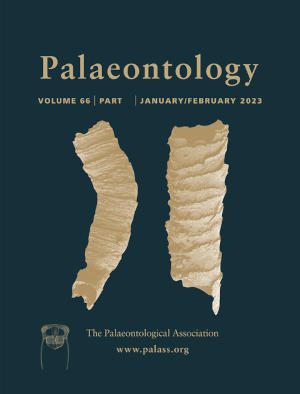Article: Morphological disparity and evolutionary rates of cranial and postcranial characters in sloths (Mammalia, Pilosa, Folivora)
Publication: Palaeontology
Volume:
66
Part:
1
Publication Date:
2023
Article number:
e12639
Author(s):
Daniel M. Casali, Alberto Boscaini, Timothy J. Gaudin, and Fernando A. Perini
Abstract
Abstract Sloth morphological evolution has been widely studied qualitatively, with comparative anatomy and morpho-functional approaches, or through quantitative assessments of morphological variation using morphometrics. Only recently, however, have folivoran morphological disparity and evolutionary rates begun to be evaluated using discrete character data. Nonetheless, patterns of morphological evolution in separate character partitions have not been investigated, neither the relative influence of, on the one hand, phylogeny, and on the other, dietary and locomotory adaptations of sloths. Here we evaluate those patterns using a phylomorphospace approach, quantifying morphological disparity and evolutionary rates, and investigating possible drivers of morphological evolution for cranial and postcranial characters in Folivora. The evolution of the morphology in those partitions is associated with distinct patterns of disparity among clades and ecological groups, even though the two partitions do not differ substantially in overall evolutionary tempo. Historical processes shaped the morphological evolution of sloths more consistently than ecological ones, although changes in postcranial characters also seem to be associated with locomotory adaptations, in which morphological convergences were much more common. We also discuss important methodological trade-offs in investigations of partitioned datasets mostly composed of fossil taxa.
